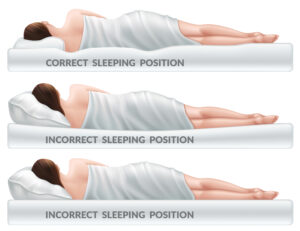Upper Back Pain after Sleeping: Causes and Remedies
Waking up refreshed and rejuvenated is what we all aim for. However, when Upper Back Pain after Sleeping greets you, it can diminish that refreshing feel. It’s a sensation I’m all too familiar with, and I can attest to the frustration it brings. The real challenge, though, isn’t just the pain. It’s understanding why it’s happening. Why does a peaceful night’s sleep, meant to rejuvenate us, lead to such discomfort?
Understanding the Pain
To grasp why many of us face upper back pain after sleeping, we first need to dive into what might be causing this discomfort. Not all back pain is created equal. Some experience a dull, lingering ache, while others may feel sharp, intermittent jabs. Moreover, the pain’s duration can vary. Some may find relief after a morning stretch, while others could be nursing it throughout the day. By understanding the nature of the pain, we’re taking the first step towards managing it. And trust me, understanding it makes all the difference.
Common Causes
So, what causes this pesky morning pain? First, let’s discuss the obvious culprits. An old mattress that has seen better days or a pillow that doesn’t offer the right support can be prime suspects. But it’s not just about what you’re sleeping on; it’s also about how you’re sleeping. Twisting and turning into awkward positions can strain your upper back. However, it doesn’t stop there. Daily activities and posture, heavy lifting, or even certain exercises can contribute to the issue. Think of your day: did you hunch over a laptop? Carry heavy bags? These daily strains accumulate, making their presence felt the next morning.
The Anatomy of Sleep
Now, let’s talk about sleep itself. The body, when at rest, goes into a recovery mode. It’s a time when cells regenerate, muscles repair, and the mind resets. However, if we’re sleeping in positions that strain our back, the body’s recovery process gets disrupted. Imagine this: you’re trying to repair a wall, but someone keeps knocking bricks out of it. That’s what happens when we don’t maintain a healthy sleep position. Furthermore, our spine, a complex structure of vertebrae, discs, muscles, and ligaments, requires a delicate balance. Any disruption to this balance, like prolonged periods in a single position or pressure from a lumpy mattress, can hinder the restorative process.

Symptoms of Upper Back Pain
- Stiffness: One of the most common symptoms, stiffness in the upper back can make it challenging to move or turn the head. This can be particularly noticeable after waking up or sitting for extended periods.
- Sharp, Shooting Pains: Some might experience sudden and intense pains that seem to shoot or radiate from the upper back, sometimes reaching the neck or shoulder region.
- Dull, Persistent Aches: Unlike the sharp pains, some suffer from a continuous dull ache that lingers, often intensifying with certain movements or postures.
- Muscle Tightness: The muscles in the upper back may feel taut or tense, making it difficult to relax or find a comfortable resting position.
- Tingling or Numbness: This can feel like “pins and needles” and may extend to the arms or fingers. This sensation suggests nerve involvement.
- Weakness: Some individuals may feel a weakness in their arms or shoulders, often connected to the pain in the upper back.
- Headaches: Due to the proximity of the upper back to the neck and head, persistent upper back issues can sometimes lead to tension headaches.
- Restricted Range of Motion: Difficulty or pain when trying to move the arms, shoulders, or neck can be a direct symptom of upper back problems.
- Swelling or Inflammation: Visible swelling or a feeling of warmth in the upper back area can indicate inflammation, often accompanying other symptoms.
- Tenderness to Touch: The affected area might be sensitive or painful to the touch, indicating localized inflammation or injury.
Manta Sleep Mask: Your Solution to Better Sleep
Preventative Measures
Why wait for the pain to strike when you can stop it in its tracks?
- Ergonomic Workspaces: Ensure your desk, chair, and computer setup cater to proper posture. Your computer monitor should be at eye level, and your keyboard and mouse should be positioned so your arms form a 90-degree angle.
- Regular Breaks: If you’re working at a desk or doing any activity for an extended period, take short breaks every hour to stretch and move around.
- Exercise Regularly: Strengthening the muscles around your back can provide better support and reduce the risk of pain. Focus on exercises that target the upper back, shoulders, and core.
- Maintain Good Posture: Be conscious of your posture throughout the day, whether you’re standing, sitting, or walking. Consider practices like yoga or pilates to enhance posture awareness.
- Invest in a Quality Mattress: Sleeping on a supportive mattress can make a significant difference. If your mattress is old or sagging, it might be time for a replacement.
- Pillow Positioning: Use pillows that support the natural curve of your neck. Avoid using too many pillows that force your neck into an unnatural position.
- Stay Hydrated: Drinking sufficient water supports muscle function and can help prevent cramping.
- Limit Heavy Lifting: If you must lift something heavy, use proper techniques by bending at the knees and keeping the item close to your body. Engage your core muscles and avoid twisting your back.
- Manage Stress: Chronic stress can lead to muscle tension, especially in the upper back and neck. Find stress-relieving activities that work for you, such as meditation, deep breathing exercises, or journaling.
- Seek Regular Physical Therapy: If you’re prone to upper back pain, regular check-ins with a physical therapist can provide exercises and techniques to preemptively combat discomfort.
Home Remedies and Treatments
We’ve all had those days when our upper back just doesn’t feel right. Thankfully, there are several remedies and treatments you can try at home before making that trip to the doctor. Over-the-counter pain relievers, such as ibuprofen or acetaminophen, can be a quick fix to reduce inflammation and pain. Additionally, topical pain relief creams, containing ingredients like menthol or capsaicin, can offer targeted relief when applied directly to the affected area. Moreover, maintaining an overall healthy lifestyle, including a balanced diet rich in anti-inflammatory foods, can play a pivotal role in managing pain.
Stretching Exercises
Ever wake up feeling stiff? Stretching can be a game-changer. Incorporating daily stretching exercises, especially for the upper back, can enhance flexibility, reduce tension, and improve overall mobility. Simple stretches, such as the cat-camel stretch or shoulder blade squeeze, can be performed without any equipment. But remember, consistency is key. Making stretching a regular habit can not only alleviate current discomfort but can also help in preventing future bouts of pain.
Hot and Cold Therapy
The age-old debate: hot or cold? Well, when it comes to upper back pain, both can work wonders. Cold therapy, using ice packs or cold compresses, can be beneficial immediately after you notice pain or after a strenuous activity. It reduces inflammation and numbs the sore area. On the other hand, heat therapy, using warm towels or heating pads, can help to relax and soothe body muscles, providing relief from chronic pain. It’s essential to be cautious; always use a cloth to protect your skin from direct contact with ice or heat to prevent any skin damage.
When to Seek Medical Help
While many experience occasional upper back pain that subsides with self-care, there are times when it’s crucial to consult a medical professional. If the pain persists for several weeks despite home treatments, it might be time to seek expert advice. Other red flags include severe pain, pain following a traumatic event like a car accident, or accompanying symptoms like chest pain or difficulty breathing. It’s always better to be safe and get any persistent or severe pain checked out by a professional.
Upper back pain after sleeping can be a real hindrance to our daily lives. While it’s common, it shouldn’t be neglected. By understanding its causes and recognizing its symptoms, you can take proactive measures to prevent it. Home remedies and treatments like stretching exercises and hot/cold therapy can offer relief. However, always listen to your body, and if the pain becomes too much, don’t hesitate to seek medical attention. Remember, a pain-free back is pivotal for a good quality of life, so take good care of it!
FAQs
1. Can posture during the day affect nighttime pain?
Absolutely. Poor daytime posture can strain the back, leading to nighttime discomfort.
2. How often should I replace my mattress?
Every 7-10 years, depending on its wear and quality.
3. Are there any sleeping positions I should avoid?
Stomach sleeping can strain the upper back and neck.
4. Do ergonomic pillows help?
They can, by ensuring proper neck and spinal alignment.
5. Could my back pain indicate something more serious?
While often it’s due to posture or the mattress, persistent pain should be medically evaluated.




